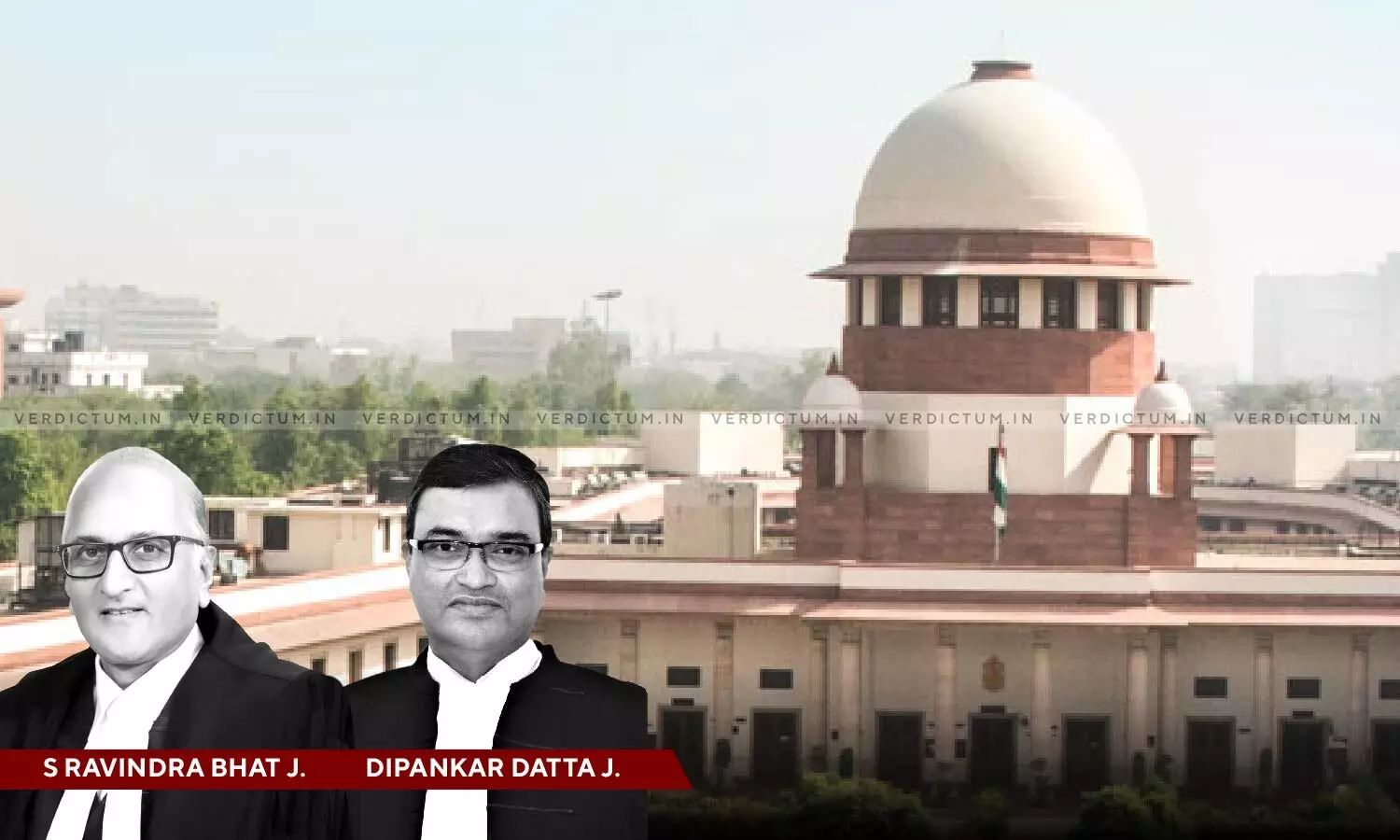
Interpretative Tools Should Be Employed To Make A Statute Workable And Not To Reach A Particular Outcome: SC Observes
 |
|The Supreme Court held that interpretative tools should only be used to make a statute workable rather than to achieve a specific outcome. The Bench noted that there is a difference between using interpretative tools to make a statute workable and engaging in judicial legislation.
The Court dismissed a set of Civil Appeals filed by the Commissioner (Customs, Central Excise, and Service Tax) challenging the order and judgment of the Patna and Orissa High Court. The Court emphasized that courts should not interpret a statute based on the desired outcome, even when a particular interpretation of a statute does not produce the expected results.
“To make a statute workable by employing interpretative tools and to venture into a kind of judicial legislation are two different things. Merely because the statute does not yield intended or desired results, that cannot be reason for us to overstep and cross the Lakshman Rekha by employing tools of interpretation to interpret a provision keeping in mind its outcome. Interpretative tools should be employed to make a statute workable and not to reach to a particular outcome”, the Bench comprising Justice S. Ravindra Bhat and Justice Dipankar Datta observed.
Advocate Nisha Bagchi appeared for the Appellant, and Additional Solicitor General Balbir Singh and Senior Advocate Gopal Sankaranarayanan appeared for the Respondents.
The case revolves around contractual agreements for construction projects involving IIT, NIT, and SPCL. NBCC awarded SPCL a contract for the construction works, but an audit objection arose, contending that service providers for educational institutions categorized as "governmental authorities" were exempt from service tax. IIT was directed to recover or adjust the service tax paid to SPCL. SPCL sought relief from the Patna High Court, which ruled in favor of SPCL and directed the refund of the service tax collected. A similar situation arose concerning a construction contract with NIT, where SPCL sought service tax clarification. The Orissa High Court allowed SPCL's petition for a service tax refund, following the Patna High Court's precedent.
The Commissioner filed a set of Civil Appeals against the judgment and order of the High Courts of Patna and Orissa, whereby the Writ Petitions filed by the Respondent seeking a refund of service tax was allowed.
The Court ascertained the issue: “whether the educational institutions in question, viz. (i) the Indian Institute of Technology, Patna (IIT) and (ii) the National Institute of Technology, Rourkela (NIT), are covered by the definition of “governmental authority” in Mega Service Tax Exemption Notification (Notification) inter alia exempting various services from the tax network rendered to government, governmental, or local authorities”.
The Court noted that the original definition of "governmental authority" in the Exemption Notification was narrow, restricting the scope of exemptions to only a select few entities. The Bench observed that the Clarification Notification was introduced to broaden the definition of "governmental authority" and expand the scope of exemptions for service tax. This change effectively widens the base of entities eligible for service tax exemptions.
The Court noted an inconsistency in the interpretation of an amended "governmental authority" definition in clause 2(s). The Court noted that while the Patna High Court upheld one interpretation, the Appellants proposed a different interpretation. However, the Bench held that the use of "or" in clause 2(s) indicates an alternative and not an "and" relationship.
Furthermore, the Court observed that using punctuation, specifically the semicolon and comma, is crucial in the case. The Clarification Notification redefined "governmental authority" in the original Exemption Notification. A semicolon in sub-clause (i) and a comma in sub-clause (ii) separate the two clauses. "Or" between sub-clauses creates a clear division, making them distinct. The Bench asserted that interpreting "or" as "and" would render the redefinition unworkable.
The Bench noted that the Appellants failed to identify specific authorities with 90% or more government equity or control, as required by the definition of "governmental authority." Without this identification, the Court held that their argument lacks validity. The Court held that the Patna High Court and the Orissa High Court decisions appear well-founded, extending benefits to educational institutions and SPCL.
“Each word in the definition clause has to be given some meaning and merely because promoting educational aspects is one of the functions of a municipality in terms of Article 243W of the Constitution read with Schedule XII appended thereto is no valid argument unless equity or control by the Government, to the extent of 90%, is shown to exist qua the relevant authority/board/body. Incidentally, neither is there any indication in the petition nor has Ms. Bagchi been able to disclose the identity of any such authority/board/other body which is covered by her argument. No such identified authority/board/body covered by the aforesaid construction of the definition of “governmental authority” in clause 2(s) of the Clarification Notification, which the appellants appeal to us to accept, having been brought to our notice, we are unable to find any fault in the decisions of the Patna High Court and the Orissa High Court extending the benefit of the Exemption Notification to the educational institutions, and a fortiori, to SPCL”, the Bench noted.
Accordingly, the Court dismissed the Appeals and affirmed the impugned order and judgment.
Cause Title: Commissioner, Customs Central Excise And Service Tax, Patna v M/S Shapoorji Pallonji And Company Pvt. Ltd. & Ors
Click here to read/download Judgment